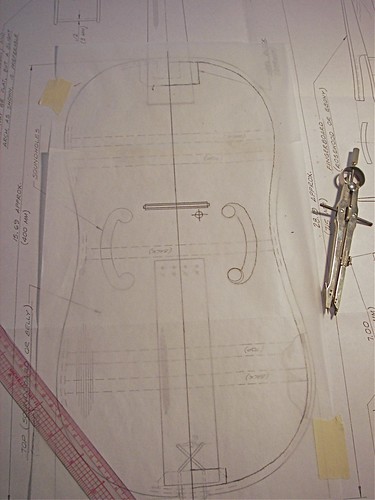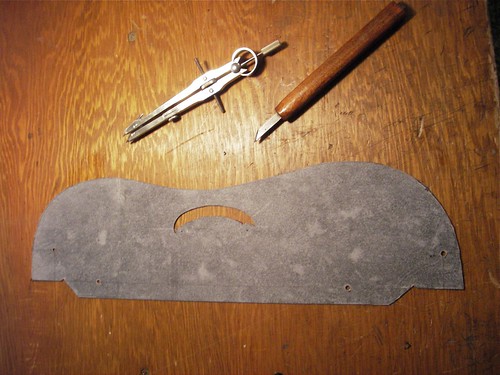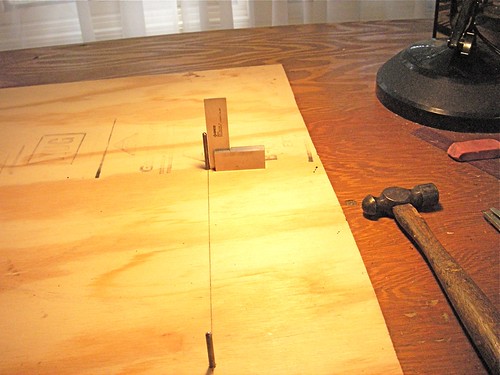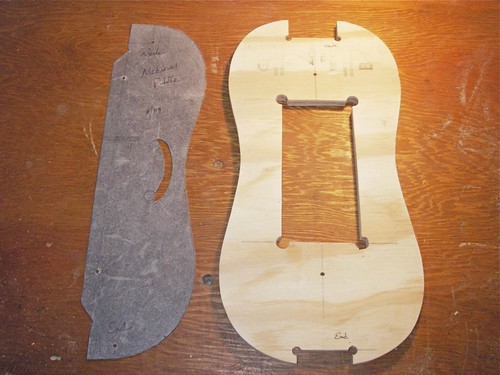Here's a Medieval fiddle in action.
I had a plan for one, so got it out, laid over some tracing paper, and marked it out with pencil.

There are bound to be other, better ways to do this, but this is how I approach making a violin mould, and it's what I know. Once the tracing is adequate, I need to make a stiff template in that shape. In the past, I have used thin metal, because it's durable, but for this one I'm going to try something easier to cut, and use what's on hand. I had pickguard material, such as used on guitars, lying about, so glued the tracing onto it.

With a knife and file, I cut it out, and smoothed it up. I have left a tab to the far side, with a couple holes along the center line. These are used to put the template down in the same place -- a registration device.
Again staying with the simple approach, I found a piece of construction grade plywood in the shop, left-over from a bit of roof replacement we did a couple years ago. I lay-out a centerline, then drill a couple holes corresponding to the holes in the template, and drive a modified 16d nail into each hole. The modification is that I cut off the heads and rounded the shafts. I use a small machinist square to make the nails square to the plywood.

Next, lay the template on the nails, trace out one half, pull the template up, flip it over, trace the other half. Remove the template and cut it out. Actually, I cut close to the line, then finish up with files, knives, planes -- whatever works for any particular part. One problem with construction grade plywood is that it's a bit coarse in plys, so is easy to tear. On my violin moulds, I use a higher grade birch plywood with more, and thinner, plys.

At the inside corner of each block I drill a hole to allow for glue squeeze-out. The big cut-out in the center is simply for clamping. I use modern clamps to hold the blocks and ribs in place while gluing. A traditional method, at least for violins, would use round holes for dowels. String is then used to hold the ribs or blocks in place while gluing.

No comments:
Post a Comment